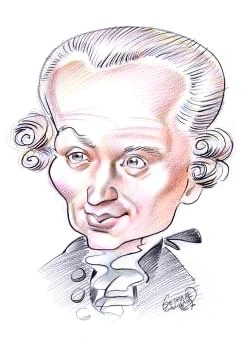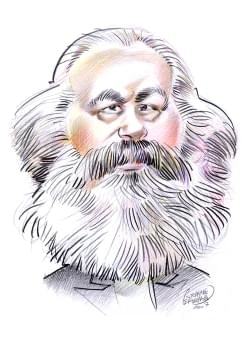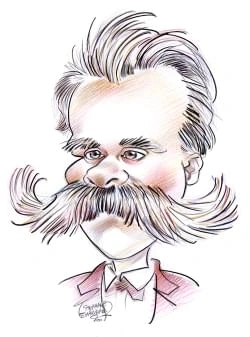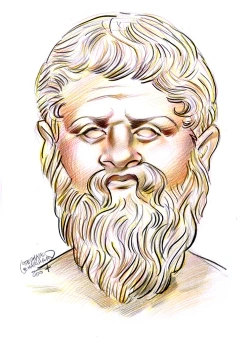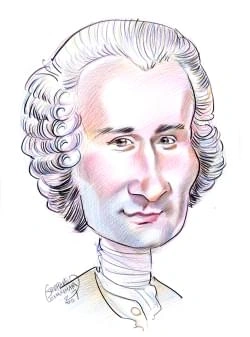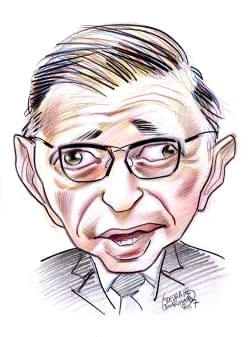260 résultats pour "religious"
-
Arab Music
I
INTRODUCTION
Umm Kulthum
Egyptian singer Umm Kulthum was revered throughout Egypt, North Africa, and the Near East for her powerful voice and
improvisational skill.
The rhythmic structure of Arab music is similarly complex. Rhythmic patterns have up to 48 beats and typically include several downbeats (called dums ) as well as upbeats (called taks) and silences, or rests. To grasp a rhythmic mode, the listener must hear a relatively long pattern. Moreover, the performers do not simply play the pattern; they elaborate upon and ornament it. Often the pattern is recognizable by the arrangement of downbeats. The Rhythm in Arab Music illustration demonstratesa...
-
Discrimination.
Throughout United States history many other groups have suffered racial or religious discrimination. Since Europeans first came to America, Native Americans havebeen forcibly deprived of their lands and denied civil rights. Congress enacted the Indian Civil Rights Act in 1968, and the federal courts have entertained a number ofsuits designed to restore to Native American tribes ancestral lands and hunting and fishing rights. Many religious groups, including Roman Catholics, Jews, and others,have...
-
Criminal Punishment.
In the United States and Canada, younger offenders may be sentenced to highly regimented, military-style correctional programs known as boot camps. Generally,offenders volunteer to participate in boot camp programs to avoid other types of incarceration. At boot camps, officials subject offenders to strict discipline and physicaltraining. They also provide educational or vocational programs. Boot camps serve as an alternative to traditional, long-term incarceration and attempt to train offenderst...
-
Berlin - geography.
boroughs of Wedding and Tiergarten. Other important central areas include Kreuzberg and Friedrichshain, now united as the Friedrichshain-Kreuzberg borough, andPrenzlauer Berg, now incorporated as a part of the Pankow borough. Tiergarten contains a large wooded park, a zoo, and a variety of public monuments as well as the large, modern Congress Hall and the Reichstag building, which wasbuilt from 1884 to 1894. The Reichstag and the surrounding area have undergone renovation to accommodate the Bun...
- incubus Roman In folklore and very early religious beliefs, an evil spirit or devil that came out at night and sat on the chests of sleeping people.
- The Sound of Music The Sound of Music, motion picture about a religious young governess who brings music and happiness to a widower's large family, set in Austria during World War II (1939-1945).
-
Native American Religions.
In the worldview of most of the indigenous peoples of North America, there were also spiritual beings to be avoided. Native Americans of the Southwest in particular,such as the Navajo and Apache, dreaded contact with ghosts, who were believed to resent the living. These peoples disposed of the bodies of deceased relativesimmediately and attempted to distance themselves from the spirits of the dead, avoiding their burial sites, never mentioning their names, and even abandoning thedwellings in whi...
-
Judaism.
is learned or memorized”), the earliest document of rabbinic literature, edited in Palestine at the turn of the 3rd century. Subsequent rabbinic study of the Mishnah inPalestine and Babylonia generated two Talmuds (“that which is studied”; also called Gemera, an Aramaic term with the same meaning; see Talmud), wide-ranging commentaries on the Mishnah. The Babylonian Talmud, edited about the 6th century, became the foundation document of rabbinic Judaism. Early rabbinic writings also include exe...
-
-
Asian Theater
I
INTRODUCTION
Asian Theater, live performance, featuring actors or puppets, native to Asia, a continent with more than 2 billion people of many nations and cultures.
III THEATER IN EAST ASIA Theater in East Asia includes the traditions of China, Japan, and Korea. Most Chinese theater is urban, secular (nonreligious) entertainment, influenced by the ethics of Confucianism. However, a belief in spirits influences rituals performed by ethnic minorities in China, and Buddhism dominates traditional Tibetan performance. Japanesedramatic forms combine native shamanistic performance, secular entertainment, and cultural or religious influences from China and Kore...
-
Latin American Architecture
I
INTRODUCTION
Oldest Cathedral in the Western Hemisphere
The oldest cathedral in the Western hemisphere is the Cathedral of Santa Maria la Menor, constructed between 1512 and
1541 in Santo Domingo, now the capitol of the Dominican Republic.
Colonial FortressThe imposing fortress of San Felipe de Barajas, in the foreground, was built in the mid-17th century to defend the colonialport settlement of Cartagena. Modern day Cartagena, Colombia, can be seen in the background.Dave G. Houser/Post-Houserstock/Corbis The use of architecture and urban planning as tools of European conquest is a recurrent theme in Latin American history. King Philip II of Spain ordered town plannersto use a grid or checkerboard plan for the layout of new towns...
-
Western Philosophy.
the popular belief in personal deities, but he failed to explain the way in which the familiar objects of experience could develop out of elements that are totally differentfrom them. Anaxagoras therefore suggested that all things are composed of very small particles, or “seeds,” which exist in infinite variety. To explain the way in whichthese particles combine to form the objects that constitute the familiar world, Anaxagoras developed a theory of cosmic evolution. He maintained that the activ...
-
Dance
I
INTRODUCTION
Dance
Archive Films/BBC Worldwide Americas, Inc.
features in its dance styles. The ordinary potential of the body can be expanded in dance, usually through long periods of specialized training. In ballet, for example, the dancer exercises to rotate,or turn out, the legs at the hips, making it possible to lift the leg high in an arabesque. In India, some dancers learn to choreograph their eyeballs and eyebrows.Costuming can extend the body's capabilities. Toe or pointe shoes, stilts, and flying harnesses are a few of the artificial aids employe...
-
Folk Art
I
INTRODUCTION
Carved Native American Figure
This figure of a Native American trapper was carved from a single pine log (about 1850-1890).
that young Native American women were taught to weave by Ursuline nuns. The overall spirit of French-Canadian folk art is colorful, happy, and, at the same time,devout. B Anglo-Canadian Folk Art The English tradition in the Maritime provinces is strong in the decoration of utilitarian objects, in graining, marbling, and incising, and in ship carvings (both figureheadsand stern-board decorations). The emigration to Canada of many New Englanders during and after the American Revolution led to int...
-
Renaissance
I
INTRODUCTION
Renaissance, series of literary and cultural movements in the 14th, 15th, and 16th centuries.
the great writings of ancient Greece and Rome. Intellectuals continued to build on the ideas of the Renaissance during the 18th century Age of Enlightenment, a time when scientific advancements led to a newemphasis on the power of human reason. One of the early Enlightenment thinkers was French philosopher and writer Voltaire. He claimed that the Renaissance was acrucial stage in liberating the mind from the superstition and error that he believed characterized Christian society during the Middl...
-
Renaissance .
the great writings of ancient Greece and Rome. Intellectuals continued to build on the ideas of the Renaissance during the 18th century Age of Enlightenment, a time when scientific advancements led to a newemphasis on the power of human reason. One of the early Enlightenment thinkers was French philosopher and writer Voltaire. He claimed that the Renaissance was acrucial stage in liberating the mind from the superstition and error that he believed characterized Christian society during the Middl...
-
Ancient Egypt - history.
The Nile River runs through the ancient city of Thebes in eastern Egypt. For a time, beginning in 2040 bc, Thebes was the capital ofEgypt.Farrell Grehan/Photo Researchers, Inc. According to inscriptions and documents found by archaeologists, the Egyptians called their country Kemet, meaning “the Black Land,” a reference to the dark, fertile soil that remained after the Nile floodwaters had receded. They also used another term, Deshret, or “the Red Land,” a designation for the desert sands th...
-
-
Temple (building)
I
INTRODUCTION
Wat Phra Kaeo
Thailand has nearly 18,000 Buddhist temples, called wats, throughout the country.
colonnaded terraces connected by ramps. The surrounding area was planted with trees and flowers during Hatshepsut’sreign and for many years after.Gian Berto Vanni/Art Resource, NY In ancient Egypt, temples were grandiose, built of huge blocks and columns of stone. Often they were enlarged by successive rulers to form strung-out series of templeparts, as in the gigantic Temple of Amon (circa 1550-1070 BC) at Al Karnak. The Nile cliffs were used as settings for temples, such as the massive mortuar...
-
Folktales
I
INTRODUCTION
"Little Red Riding Hood"
The popular children's story "Little Red Riding
seemed important to them. Thus, the Grimms postulated a common Indo-European origin for folktales, and the German philologist Theodor Benfey as well as theScottish writer William Clouston believed that stories diffused by way of travelers migrating east and west from India. Such theories, however, have proven incompleteand inadequate. Nevertheless, the research of these and other scholars greatly stimulated interest in folklore and folktales. The German scholar Max Muller held thatmyths originat...
-
Children's Literature
I
INTRODUCTION
Kate Greenaway's May Day
The delicate skill and graceful simplicity of English artist Kate Greenaway's illustrations delighted children and impressed
thinkers, including art critic John Ruskin.
With the development of vernacular literature, particularly after the invention of printing, more children's books appeared. The publications of the first English printer,William Caxton, included the Book of Curtesye (1477), a collection of rhymes that sets forth rules of conduct for a “goodly chylde.” Eight years later Caxton printed Le Morte d'Arthur (1469-1470; The Death of Arthur ) by English translator and compiler Sir Thomas Malory, which became the basis for later treatments of the A...
-
Iran - country.
Zagros mountains. In the more arid central part of the country, wild pistachio and other drought-resistant trees grow in areas that have not been disturbed by humanactivity. Tamarisk and other salt-tolerant bushes grow along the margins of the Dasht-e Kavir. A wide variety of native mammals, reptiles, birds, and insects inhabit Iran. Many species of mammals—including wolves, foxes, bears, mountain goats, red mountainsheep, rabbits, and gerbils—continue to thrive. Others—including Caspian tigers,...
-
United Arab Emirates - country.
III PEOPLE Most people living in the UAE (known as Emiris) are Arabs, a large majority of whom are city and town dwellers. A small number are nomadic (having no permanent home). The population has grown dramatically since the mid-1960s, largely due to the influx of oil workers to the country. Four-fifths of the UAE’s inhabitants areforeign workers and their families. The UAE also has a very youthful population, due to the large numbers of young foreign workers, a cultural preference for larg...
-
American Revolution.
C1 The South Southern agriculture was founded on the cultivation of tobacco, wheat, and corn in Virginia, Maryland, and North Carolina, and of rice and indigo (a blue dye) in SouthCarolina and Georgia. There was a large demand for these crops in Europe. These crops were cultivated with the help of black slaves imported from Africa. The whiteplanter class in the South was the most powerful, both politically and economically. C2 The North Wheat was the main cash crop of the mid-Atlantic colonies...
-
American Revolution - U.
C1 The South Southern agriculture was founded on the cultivation of tobacco, wheat, and corn in Virginia, Maryland, and North Carolina, and of rice and indigo (a blue dye) in SouthCarolina and Georgia. There was a large demand for these crops in Europe. These crops were cultivated with the help of black slaves imported from Africa. The whiteplanter class in the South was the most powerful, both politically and economically. C2 The North Wheat was the main cash crop of the mid-Atlantic colonies...
-
Ghana - country.
times of depressed cacao prices, Ghana has significantly increased exports of timber to generate needed revenue. In 1988 Ghana initiated a conservation plan called the Forest Resource Management Project. In 1989 Ghana restricted the export of 18 tree species, and in 1994 thecountry banned the export of raw logs. About 4.8 percent (1997) of the country’s land is officially protected, but illegal logging threatens Ghana’s remaining forests. Deforestation, overgrazing, and periodic drought have led...
-
-
Madrid - geography.
stores and offices on the first one or two levels. While many people rent their apartments, most own them and participate in cooperatives that maintain the building.Because living spaces are small by American standards, madrileños do most of their socializing in the streets, bars, restaurants, and parks of their neighborhoods. Onlya few very wealthy areas north of the city have single family houses with gardens and yards similar to those in American suburbs. Many of the newest neighborhoodsare c...
-
Greece - country.
minerals, such as chromium, copper, uranium, and magnesium, are relatively small. Greece’s small petroleum deposits, located under the Aegean Sea near the island ofThásos, are rapidly being depleted. There are no significant reserves of natural gas. Greece’s forests, probably abundant in ancient times, have been significantly depleted. Subsequent soil erosion has made reforestation efforts difficult. Although muchof Greece’s soil is rocky and dry, the country’s mountains are interspersed with sm...
-
Ancient Greece.
The first culture of Aegean civilization on the Greek mainland is named Mycenaean for the palace at Mycenae on the Pelopónnisos. Scholars call the Mycenaeans the“earliest Greeks” because they are the first people known to have spoken Greek. Mycenaean culture developed later than Minoan. The ancestors of the Mycenaean people wandered onto the mainland from the north and the east from about 4000 to2000 BC, mixing with the people already there, and by about 1400 BC the Mycenaeans had become very...
-
Ancient Greece .
The first culture of Aegean civilization on the Greek mainland is named Mycenaean for the palace at Mycenae on the Pelopónnisos. Scholars call the Mycenaeans the“earliest Greeks” because they are the first people known to have spoken Greek. Mycenaean culture developed later than Minoan. The ancestors of the Mycenaean people wandered onto the mainland from the north and the east from about 4000 to2000 BC, mixing with the people already there, and by about 1400 BC the Mycenaeans had become very...
-
Ancient Greece - USA History.
The first culture of Aegean civilization on the Greek mainland is named Mycenaean for the palace at Mycenae on the Pelopónnisos. Scholars call the Mycenaeans the“earliest Greeks” because they are the first people known to have spoken Greek. Mycenaean culture developed later than Minoan. The ancestors of the Mycenaean people wandered onto the mainland from the north and the east from about 4000 to2000 BC, mixing with the people already there, and by about 1400 BC the Mycenaeans had become very...
-
United States History - U.
and improved upon the designs of Arab sailing ships and learned to mount cannons on those ships. In the 15th century they began exploring the west coast ofAfrica—bypassing Arab merchants to trade directly for African gold and slaves. They also colonized the Madeira Islands, the Azores, and the Cape Verde Islands andturned them into the first European slave plantations. The European explorers were all looking for an ocean route to Asia. Christopher Columbus sailed for the monarchs of Spain in 149...
-
United States History - U.
and improved upon the designs of Arab sailing ships and learned to mount cannons on those ships. In the 15th century they began exploring the west coast ofAfrica—bypassing Arab merchants to trade directly for African gold and slaves. They also colonized the Madeira Islands, the Azores, and the Cape Verde Islands andturned them into the first European slave plantations. The European explorers were all looking for an ocean route to Asia. Christopher Columbus sailed for the monarchs of Spain in 149...
-
Mesopotamian Art and Architecture
I
INTRODUCTION
Mesopotamian Art and Architecture, the arts and buildings of the ancient Middle Eastern civilizations that developed in the area (now Iraq) between the Tigris and
Euphrates rivers from prehistory to the 6th century
BC.
arts. III EARLY DYNASTIC PERIOD Figures from Tell AsmarCreated around 2700 bc, these stone figures are from the city of Tell Asmar in what today is Iraq. From the Temple ofAbu, the statuettes stood in watchful prayer with the wide, staring eyes often found in Sumerian sculpture. The figuresare in the Iraq Museum, Baghdād, Iraq.Art Resource, NY The first historical epoch of Sumerian dominance lasted from about 3000 BC until about 2340 BC. While earlier architectural traditions continued, a ne...
-
-
Bodin, Jean
and doctrine contradicted Bodin's long-standing principles of legitimacy, non-resistance and religious tolerance. Yet Bodin, like many other royalist magistrates of the time, openly collaborated with the League. He sought to justify his course by mystical reflections on the preordained doom of the ruling dynasty. But he seems to have been driven by fears not only for his office and his property, but perhaps for his life as well; now, as in the past, he was under suspicion of heresy. He stood...
-
Lebanon (country) - country.
during the civil war. Within the country, thousands of Shia Muslim refugees fled fighting in southern Lebanon in the 1990s and moved into shantytowns in Beirut’ssouthern suburbs. Lebanon’s major cities were greatly affected by the civil war. Beirut has gradually regained most of its prewar population and remains the country’s largest city. Tripoli,the northern port, is the second largest city. Jūniyah, north of Beirut, was developed as a wartime port and subsequently had a population boom. Za ḩl...
-
Uzbekistan - country.
E Environmental Issues The evaporation of the Aral Sea is one of the worst ecological disasters in the world. The Aral has shrunk so much that it now holds only about one-fifth the volume ofwater it held in 1960. The shrinkage is due to irrigation withdrawals from the Amu Darya and Syr Darya, a practice that began on a massive scale in the early 1960s aspart of the Soviet Union’s ill-conceived drive to increase cotton yields in Central Asia. Growing cotton in the naturally arid and saline soil...
-
historia teatro
death, judgement, heaven, and hell - perilously familiar. The cycles stress the goodness and the grace of God, but they also point to his awesome power and the justice of his purposes. They trace the history of the divine will from the fall of Lucifer, through the creation of the world and the fall of Adam, to Christ's acts of redemption. They end with a calculated bang as God's 'for-thoght' is fulfilled in the ending of 'all erthely thyng'. English theatre had its formal beginnings in the L...
-
Mythology
I
INTRODUCTION
Mythology, the body of myths of a particular culture, and the study and interpretation of such myths.
usually define a myth as a story that has compelling drama and deals with basic elements and assumptions of a culture. Myths explain, for example, how the worldbegan; how humans and animals came into being; how certain customs, gestures, or forms of human activity originated; and how the divine and human worlds interact.Many myths take place at a time before the world as human beings know it came into being. Because myth-making often involves gods, other supernatural beings, andprocesses beyond...
-
James Madison.
In the spring of 1784 Madison again ran for election to the Virginia assembly, and won. He served nearly three years there, pursuing the same objectives he had foughtfor in Congress. He advocated strengthening the federal government, which was an unpopular position in Virginia, as it was in most of the states. He consistentlysupported measures, at both state and national levels, that would best safeguard the rights of the individual. Madison also continued to oppose any connection betweenchurch...
-
James Madison
In the spring of 1784 Madison again ran for election to the Virginia assembly, and won. He served nearly three years there, pursuing the same objectives he had foughtfor in Congress. He advocated strengthening the federal government, which was an unpopular position in Virginia, as it was in most of the states. He consistentlysupported measures, at both state and national levels, that would best safeguard the rights of the individual. Madison also continued to oppose any connection betweenchurch...
-
James Madison - USA History.
In the spring of 1784 Madison again ran for election to the Virginia assembly, and won. He served nearly three years there, pursuing the same objectives he had foughtfor in Congress. He advocated strengthening the federal government, which was an unpopular position in Virginia, as it was in most of the states. He consistentlysupported measures, at both state and national levels, that would best safeguard the rights of the individual. Madison also continued to oppose any connection betweenchurch...
-
-
Atheism.
with the philosophical ideas of materialism, which holds that only matter exists; communism, which asserts that religion impedes human progress; and rationalism,which emphasizes analytic reasoning over other sources of knowledge. However, there is no necessary connection between atheism and these positions. Some atheistshave opposed communism and some have rejected materialism. Although nearly all contemporary materialists are atheists, the ancient Greek materialist Epicurusbelieved the gods wer...
-
Immigration.
1655, only to lose all of their North American colonies to the British in 1664. These early colonies were often quite cosmopolitan, drawing settlers from many nations.When the English seized New Amsterdam, the city was home to perhaps 1500 residents, including Walloons, Huguenots, Swedes, Dutchmen, and African Americans. C The French and Spanish The French and Spanish also established colonies in North America. The Spanish established the oldest permanent European settlement in Saint Augustine,...
-
Immigration - U.
1655, only to lose all of their North American colonies to the British in 1664. These early colonies were often quite cosmopolitan, drawing settlers from many nations.When the English seized New Amsterdam, the city was home to perhaps 1500 residents, including Walloons, Huguenots, Swedes, Dutchmen, and African Americans. C The French and Spanish The French and Spanish also established colonies in North America. The Spanish established the oldest permanent European settlement in Saint Augustine,...
-
Latvia - country.
The population of Latvia is about 2,245,423 (2008 estimate), yielding an average population density of 35 persons per sq km (91 per sq mi). Latvia is highly urbanized.Some 66 percent of the population lives in urban areas, with nearly one-third of the total population residing in the capital, Rīga. Other important cities includeDaugavpils, an industrial center in the southeast, on the Daugava River; Liep āja, an important port on the Baltic Sea; Jelgava, an industrial center near Rîga; J ūrmala,...
-
Denmark - country.
forests, which cover just 11.6 percent of the country, include conifers (mainly fir, spruce, larch, and pine), beech, oak, birch, and ash. Several varieties of ferns andmosses common to the northern European mainland are also found. Wild animals are scarce. Natural animal life is limited to deer and small animals such as foxes,squirrels, hares, wild ducks, pheasants, and partridges. Numerous species of freshwater fish live in Denmark’s streams and lakes. F Environmental Issues Considered highly...
-
Uganda - country.
Uganda’s population is predominantly rural and is concentrated in the south, particularly in the crescent at the edge of Lake Victoria and in the southwest. Almost allUgandans are black Africans. Foreign residents make up less than 4 percent of the population and come mostly from neighboring states. In 2008 Uganda’s population was estimated at 31,367,972. The estimated growth rate of the population in 2008 was 3.6 percent. The birth rate was 48 per 1,000people and the death rate 12 per 1,000. Th...
-
El Salvador - country.
III PEOPLE The Spanish subjugated the native population of El Salvador in the 16th century. Few Spanish women came to the country, however, so many Spanish men took NativeAmerican women as their mates. Today nearly 90 percent of the population is mestizo , of mixed European and Native American descent. People of purely Native American descent represent about 5 to 10 percent of the population, while people of European descent represent only about 1 percent. El Salvador’s population, 5.2 millio...
-
Archaeology.
Prehistoric archaeology is practiced by archaeologists known as prehistorians and deals with ancient cultures that did not have writing of any kind. Prehistory, a term coined by 19th-century French scholars, covers past human life from its origins up to the advent of written records. History—that is, the human past documented insome form of writing—began 5000 years ago in parts of southwestern Asia and as recently as the late 19th century AD in central Africa and parts of the Americas. Becaus...
-
-
Campbell, George
Campbell's philosophy was influenced by that of David Hume , though Campbell employed much effort in correcting Hume. Campbell followed Hume in equating experience with the habitual associations of ideas in the mind, but thought that Hume's extreme emphasis on personal experience seriously undervalued the importance of memory (the only voucher for the past evidence of the senses) and of testimony to human knowledge as a whole. He therefore employed Common Sense philosophy to defend the nec...
-
Bayle, Pierre
through on all the consequences of God's non-existence, they would indeed plunge into a life of vice without remorse. For though convinced that we can know the principles of morality without relying upon belief in God, Bayle thought that without such a belief we would have no reason to subordinate our self-interest to them. Still, the atheist would be unlikely to take up the life of crime, Bayle insisted, because the rational calculation of advantage is a less powerful motive than the concern...
}})


